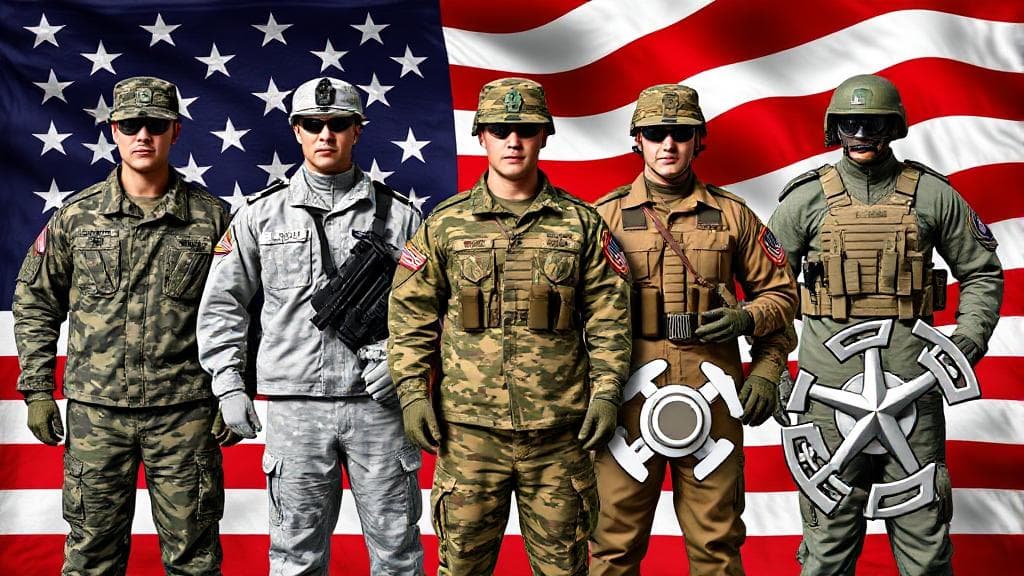Introduction
The military is a complex and multifaceted institution, essential for national defense and security. Each branch plays a unique and vital role in protecting citizens and maintaining global stability. Understanding these branches is crucial for anyone considering a military career or simply wanting to gain a deeper appreciation of how the armed forces operate.
The Main Branches
United States Army
The United States Army is the oldest and largest military branch, primarily responsible for land-based operations. Its motto, "This We'll Defend," reflects its commitment to protecting American interests.
Key Responsibilities:
- Ground warfare
- Territory defense
- Humanitarian assistance
- Disaster relief
United States Navy
The U.S. Navy projects power through the world's oceans, maintaining freedom of the seas and protecting maritime trade routes. They operate:
- Aircraft carriers
- Submarines
- Amphibious assault ships
- Surface combatants
United States Marine Corps
As part of the Department of the Navy, the Marine Corps serves as a rapid-response force specializing in ground combat, amphibious operations, and expeditionary warfare.
First to fight, ready to fight and win in all domains
United States Air Force
The U.S. Air Force dominates the skies with cutting-edge aircraft and space capabilities.
Air Superiority
- Fighter aircraft operations
- Strategic bombing
- Close air support
Space Operations
- Satellite deployment
- Space surveillance
- Missile warning systems
United States Space Force
The U.S. Space Force, established in 2019, is the newest military branch. Its focus areas include:
- Satellite operations
- Space surveillance
- Cyber operations
- Missile warning
United States Coast Guard
The Coast Guard operates under the Department of Homeland Security during peacetime but can transfer to Navy command during wartime.
Maritime Law Enforcement
Safety Operations
- Search and rescue
- Port security
- Maritime safety
Reserve Components
Each branch maintains reserve forces that supplement active-duty personnel:
| Branch | Reserve Component |
|---|---|
| Army | Army Reserve & National Guard |
| Navy | Navy Reserve |
| Air Force | Air Force Reserve & Air National Guard |
| Marine Corps | Marine Corps Reserve |
| Coast Guard | Coast Guard Reserve |
Special Operations Forces
Special operations forces operate across multiple branches:
- Delta Force: Elite counter-terrorism unit under the Army
- Navy SEALs: Elite special operations unit under the Navy
- Air Force Special Operations: Conducts combat search and rescue and personnel recovery
- Marine Corps Forces Special Operations Command (MARSOC): Conducts counter-terrorism and direct action
These branches work together through joint operations, ensuring comprehensive national defense. Their distinct capabilities and missions create a robust military structure capable of responding to diverse threats and challenges in modern warfare. The success of military operations often depends on the seamless integration of these branches, each bringing unique strengths to support national security objectives.
